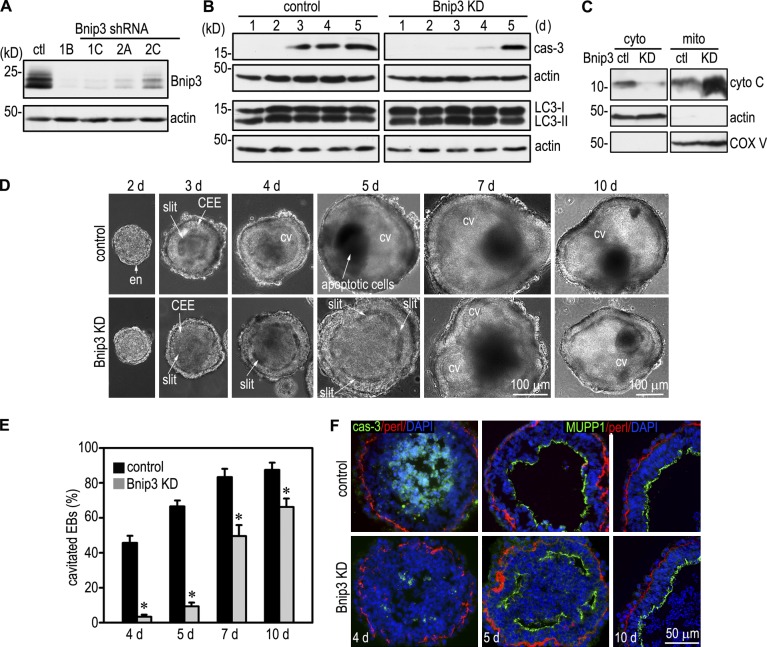Figure 2.
Bnip3 knockdown inhibits apoptosis and cavitation. (A) Stable ES cell clones expressing Bnip3 shRNAs or the scrambled control (ctl) were established based on puromycin resistance and GFP fluorescence. Immunoblot analysis of 3-d EBs showed a reduction of Bnip3 expression by 97% in clone 1B. (B) Bnip3 knockdown (KD; clone 1B) and control EBs were cultured for 1–5 d and analyzed by immunoblotting for cleaved caspase-3 (cas-3), microtubule-associated protein 1 LC3, and actin. Bnip3 knockdown inhibited caspase-3 activation but not the conversion of LC3-I to LC3-II. (C) Cytosolic (cyto) and mitochondrial (mito) preparations of 3-d control and Bnip3 knockdown EBs were analyzed by immunoblotting for cytochrome C (cyto C). Actin serves as a cytosolic loading control, and complex V (COX V) serves as a mitochondrial loading control. Bnip3 knockdown inhibited cytochrome C release from the mitochondria to the cytoplasm. (D) Live-phase micrographs show the differentiation of endoderm (en) and the CEE and the formation of a proamniotic-like cavity (CV). Bnip3 knockdown significantly delayed the clearance of centrally located cells. (E) EBs with a central cavity were counted by live-phase microscopy and plotted as a percentage of total EBs examined. n = 7 independent experiments with a total of 1,387–1,906 EBs for each group. Error bars represent the mean ± SD. *, P < 0.01. (F) EBs were cultured for 4, 5, and 10 d and immunostained for cleaved caspase-3, the apical polarity marker MUPP1, and basement membrane perlecan (perl). The nucleus was counterstained with DAPI. Bnip3 knockdown inhibited apoptosis and delayed lumen clearance but had no effect on epiblast polarity.

